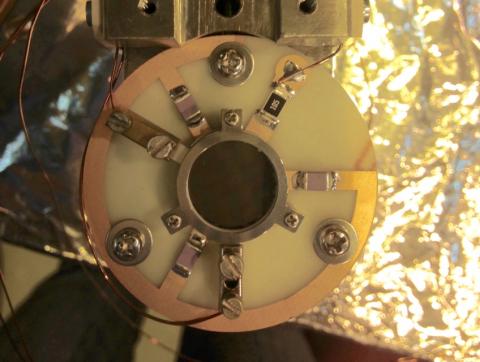Speed dating for archaeologists – thanks to CERN technology

Carbon dating is the ‘gold standard’ technique applied by archaeologists worldwide to date objects made from organic materials from over the past 50,000 years. However, this can be a very costly process and archaeologists can wait months for samples to be analysed, a timescale that can disrupt research programmes and cause frustration all round.
Carbon dating is based on the measurement of a specific isotope of carbon – Carbon 14 (14C). Produced in the upper atmosphere, 14C is taken in by plants through photosynthesis, which are then consumed by organisms on the planet. So every living thing has 14C in them. Once it dies, the 14C decreases through a pattern of decay, and it is by measuring the time taken for the 14C to decay, using laser and accelerator technologies, that archaeologists are able to date materials with accuracy. Now, UK start-up Artemis Analytical, a spin out of the University of Manchester, is about to change all that, developing technology from the heart of CERN to reduce the waiting time and cost of carbon dating, with results in days rather than months. The company is gearing up to take its technology to the next stage at the STFC CERN Business Incubation Centre at Daresbury Laboratory, designed to support start-ups looking to apply technologies developed through high energy physics research to develop new products and services.
Artemis Analytical’s pioneering new technology is based on ultra-sensitive laser spectroscopy techniques developed at CERN’s ISOLDE facility, capable of detecting isotopes that are only produced in supernovae explosions. At the STFC CERN BIC, located at Sci-Tech Daresbury, in the Liverpool city Region, the company will now work towards finalising its prototype of an enhanced-sensitivity mass spectrometer designed specifically for the rapid detection of 14C from environmental samples and ancient artefacts. The mission is to provide a quick and cost effective carbon dating analysis service for archaeologists, and eventually to commercialise a compact, rapid results spectrometer.
Dr Kieran Flanagan, a Reader of Physics at the University of Manchester, said: “Our mission is to provide archaeologists with a fast and affordable dating service that will enable them to date their research materials in days. Our technique builds on years of research carried out at CERN by researchers from the University of Manchester, and we’re really excited to be taking this to next stage with support from the STFC CERN BIC. Eventually we plan to extend this technology into related activities such as forensics and identifying counterfeit whisky, wine and art.”
Delyth Edwards, Business Incubation Programmes Manager, at STFC, said: “For a small company, turning an innovative idea into a viable commercial reality is a massive challenge, and I’m thrilled that the STFC CERN BIC is providing the right environment and support to do this. Artemis Analytical is poised to provide game-changing technology for carbon dating analysis, which is exciting news for archaeology and everything it can teach us about how we used to live. It’s also a fantastic example of how technologies, originally developed for high energy physics research, can be applied to the benefit of both society and the UK economy.”
Get involved with the STFC CERN BIC
The STFC CERN BIC supports SMEs that are using technologies originally developed for use in high energy physics research to develop new products and services. It provides valuable access to STFC and CERN intellectual property, technologies and expertise, combined with collaboration opportunities and up to £40k in funding.
Further information and advice about getting involved with the STFC CERN BIC, and how it could benefit your company, can be found at the STFC CERN BIC website.
Further information about Daresbury Laboratory at the STFC website.
Article originally published at the Science and Technology Facilities Council
- Log in to post comments
